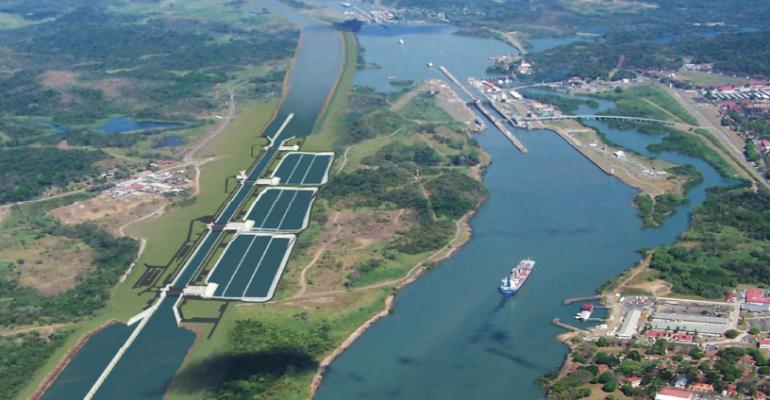For those who thought the $5.4 billion, nine-year construction project to widen the Panama Canal would be an immediate game-changer for the U.S. logistics and industrial market, there’s likely to be disappointment.
The reasons there’s not much celebration following the June 26 official completion of the project, with the first official transit of a Post-Panamax-size ship to go through the new lock system, are two-fold, and just as confusing as the famous backward sentences: There was more growth than expected, and also less growth than expected.
On the more growth side, the East Coast has for the past two years enjoyed more traffic for reasons that have nothing to do with the canal--shippers, tired of strikes and bottlenecks holding up their cargo unloading on the West Coast, began hedging their bets by sending more to the East Coast ports. The split-up of each coast’s share of cargo has inched closer to 50-50 already, says David Egan, head of the industrial research team at commercial real estate services firm CBRE. The dominance of Long Beach, while strong, has already started to wane, he says, with the West Coast port market share dropped from 57 percent in 2010 to 52 percent in 2015.
“The strikes and changes in supply chain requirements forced the hands of the suppliers, and made them rethink their options,” Egan says. “I think it might get close to equal as time goes on.”
However, on the less growth side, the East Coast ports—though busy with tens of billions of dollars of new port improvements to get ready for these new ships that can handle twice the cargo—just didn’t make the deadline. Dredging projects are still ongoing, or even still on the planning table. The most impactful project that would bring products to the millions of consumers—improvements to the New York/New Jersey port that include the $1.3 billion plan to lift the Bayonne Bridge—is stalled until late 2017.
“I know they have hopes to be the country’s largest port, and it could happen with the ability to reach so much of the population, but they have to get over the bridge obstacle first,” Egan says.
Even the East Coast ports that are closer to their growth goals won’t increase shipping much in the short term, he notes. Miami’s large dredging project may bring more business, but it’s still too far south to attract companies trying to reach the New England and Midwest regions. There are some ports that are seeing massive comparative growth—for example, Savannah, Ga. and Greenville-Spartanburg, S.C.
Shippers, however, are not yet convinced that these ports are reason enough to make a large shift in delivered freight from the West Coast, Egan says. In fact, most shipping lanes have not yet deployed regular mega-ship service, and current supply chain pressures may keep owners and investors from replacing the current fleets for several years.
“Even if there’s a one percent gain in new industrial demand for some of these regions, that’s huge, but I think we’re expecting that any future big movement will come near the large population centers, as retailers try to hit consumers in same-day delivery,” he says. “The current market is driven by nimble e-commerce, and I don’t see that changing. If the market does eventually see a downturn, I think e-commerce will get us through, but there won’t be a sudden lurch in deliveries to the East Coast right away. It will balance out more, but it will happen gradually.”

